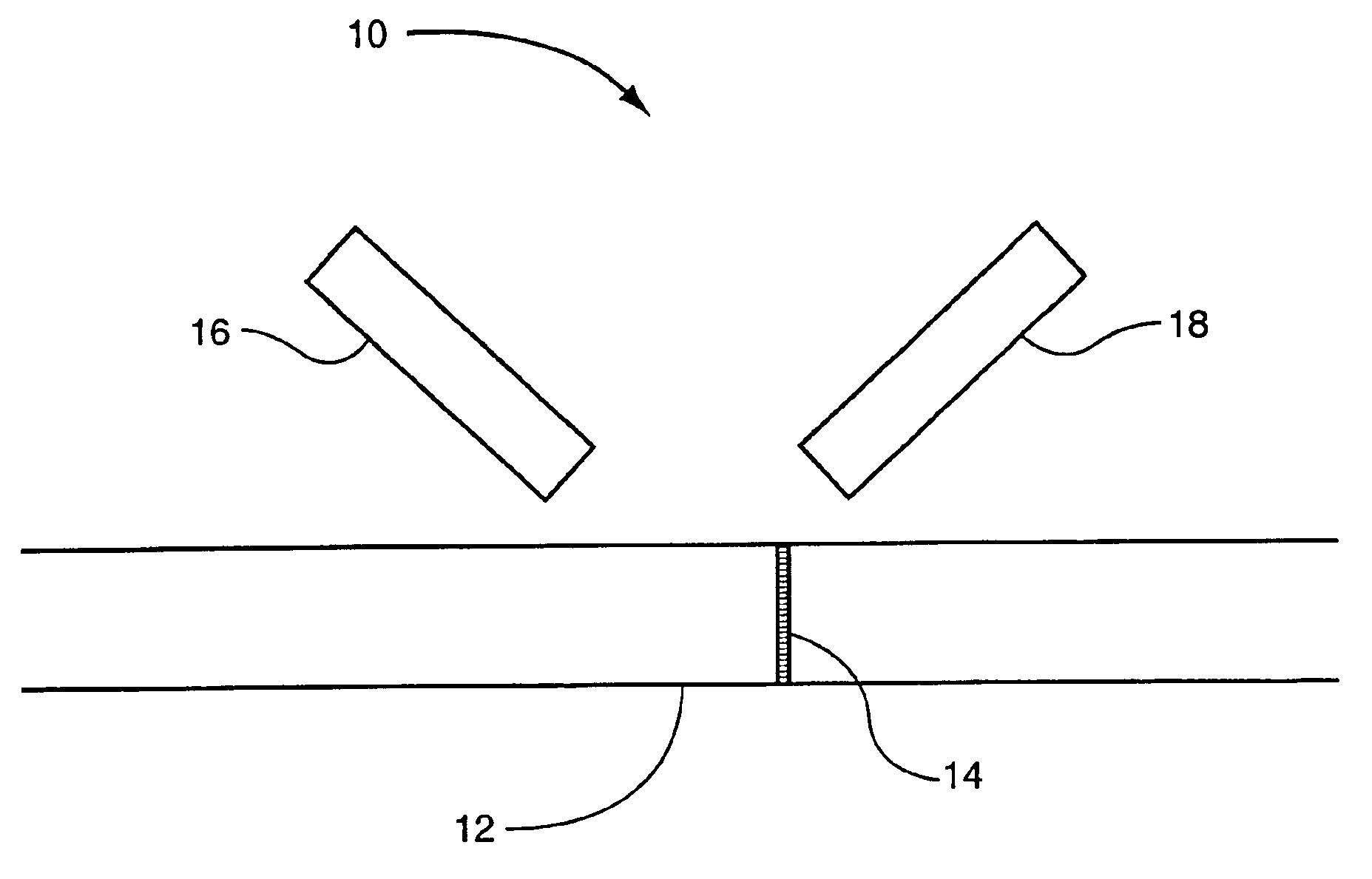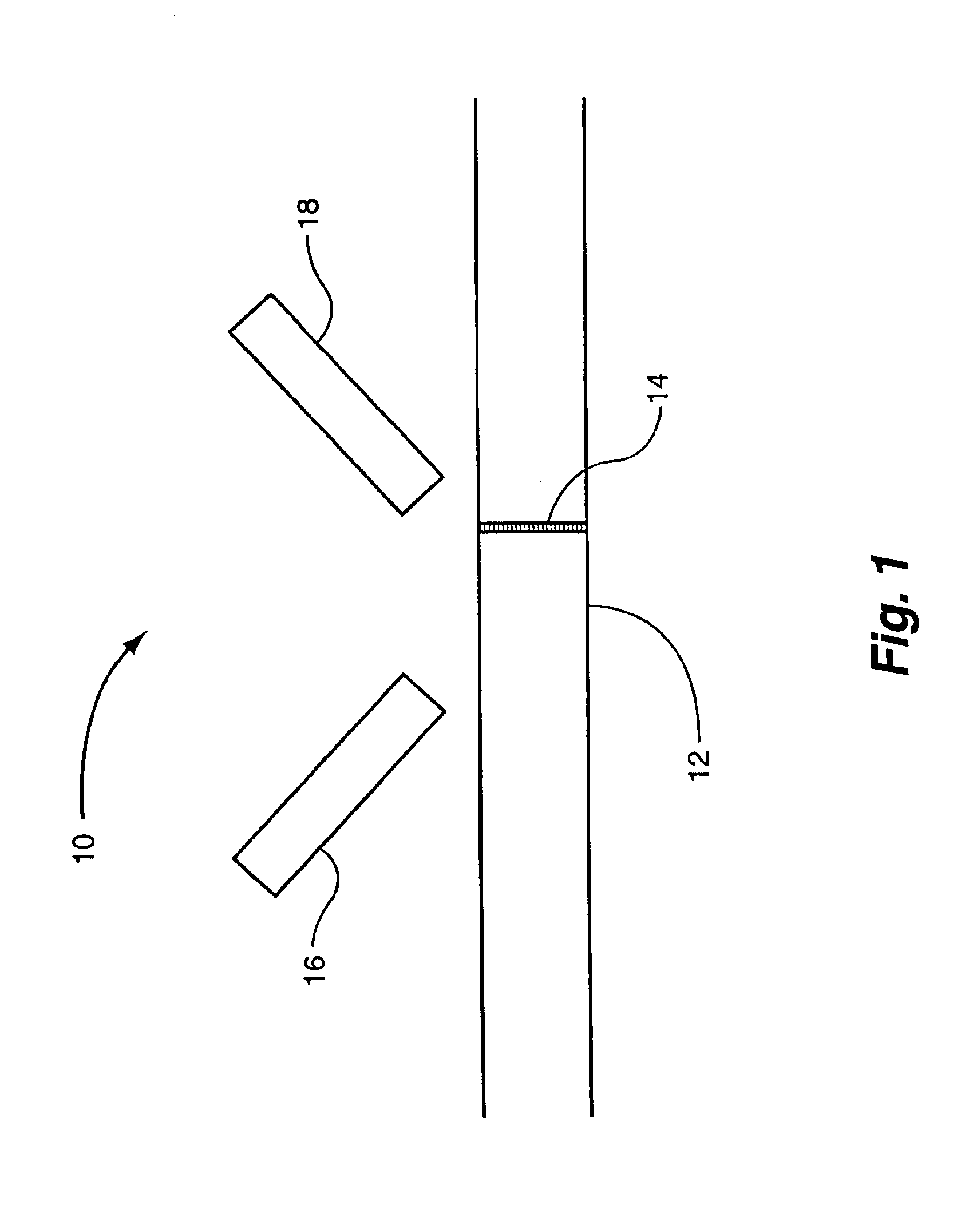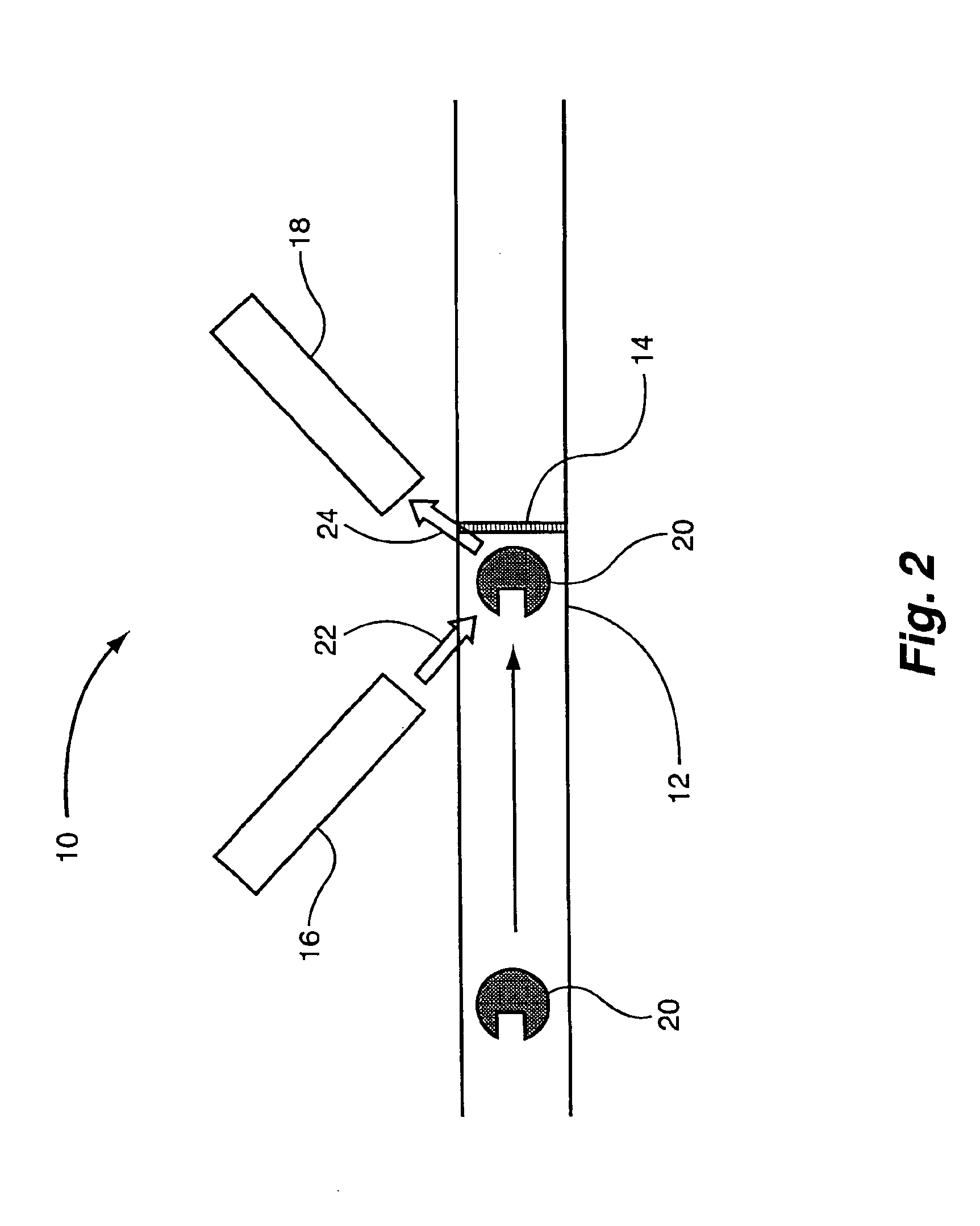Method and apparatus for detecting chemical binding
a flow method and chemical technology, applied in the field of flow method for detecting chemical binding, can solve the problems of inability to detect binding between many types of potential pharmaceutical chemicals, and difficult to predict which chemicals will bind effectively to proteins
- Summary
- Abstract
- Description
- Claims
- Application Information
AI Technical Summary
Benefits of technology
Problems solved by technology
Method used
Image
Examples
Embodiment Construction
The present invention includes a method for detecting and measuring binding affinities between chemicals and target binders. The method involves sending a solution (preferably an aqueous solution) of target binder through a conduit to a size exclusion filter. The target binders used with the invention are too large to pass through the size exclusion filter. After sending the target binder into the conduit, the amount of target binder near the size exclusion filter, upstream of the size exclusion filter, and downstream of the size exclusion filter may be quantified by sending x-rays to these sections and detecting any x-ray fluorescence signal due to the target binder. If an x-ray fluorescence signal due to the target binder is detected downstream of the particular filter used, then the filter may be damaged or the pore size may not be small enough to block the flow of target binder. After target binder collects on the size exclusion filter, a solution (preferably an aqueous solution...
PUM
| Property | Measurement | Unit |
|---|---|---|
| fluorescence | aaaaa | aaaaa |
| atomic number | aaaaa | aaaaa |
| shapes | aaaaa | aaaaa |
Abstract
Description
Claims
Application Information
 Login to View More
Login to View More - R&D
- Intellectual Property
- Life Sciences
- Materials
- Tech Scout
- Unparalleled Data Quality
- Higher Quality Content
- 60% Fewer Hallucinations
Browse by: Latest US Patents, China's latest patents, Technical Efficacy Thesaurus, Application Domain, Technology Topic, Popular Technical Reports.
© 2025 PatSnap. All rights reserved.Legal|Privacy policy|Modern Slavery Act Transparency Statement|Sitemap|About US| Contact US: help@patsnap.com



